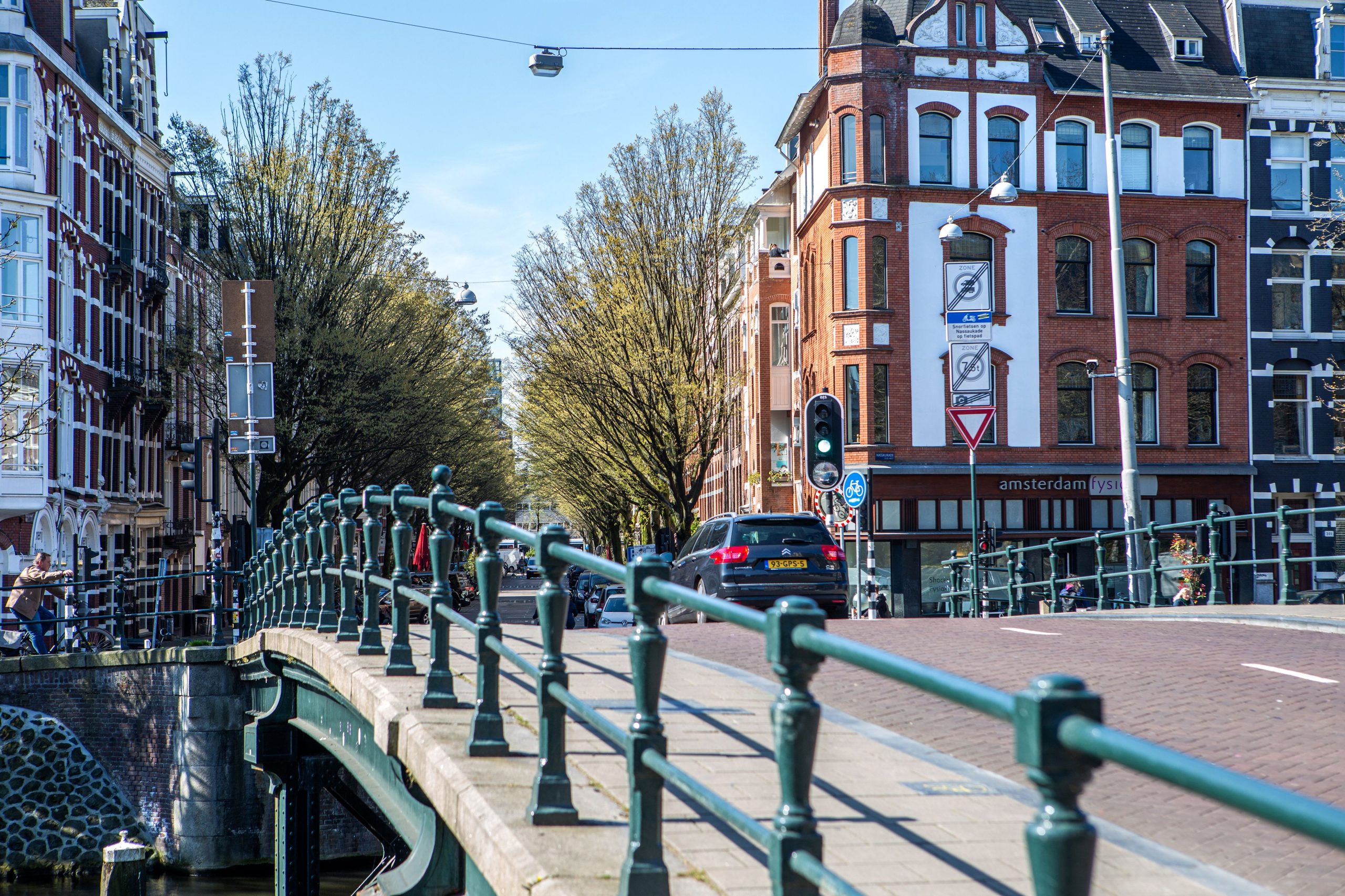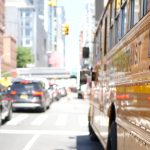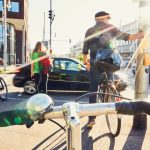
From digital control to city management
Accessibility and livability
Cities are taking control of shrinking public space to ensure better accessibility and livability. Technology can offer valuable support by providing rich data from smart sensors and network-wide, multimodal traffic management. Digital control
and city management help make the city more attractive to everyone.
Accessibility and livability have a huge impact on the wellbeing of city residents. And cities are popular: urban populations are growing, as are the numbers of entrepreneurs and visitors. This means demand for amenities is growing, including shops, hospitals, and schools, as well as for office space and bars, hotels, and restaurants. And above all, new homes are needed – Amsterdam alone is planning to build 7,500 new houses every year. All this new construction will lead to urban densification. The urban space is shrinking and streets will become ever busier. Parcel delivery vans, construction and waste disposal vehicles only add to the congestion. In sum: accessibility and livability are coming under pressure.
Wellbeing is not the only thing affected by this development. A livable city is a city with a healthy economy. Expats like to come to a city where life is good and work is plentiful. If the city center is designed to facilitate walking, people are more likely to visit bars, restaurants, and shops to spend money there. And entrepreneurs want their businesses to be accessible.
Digital control of public space
Use of the urban public space is dynamic. People go outside on sunny days and stay in when it rains. School children, college students, and commuters travel to and from their schools, universities, and offices on school- and workdays. The traffic situation is totally different during vacation periods, and major events similarly have a dynamic of their own. On King’s Day, many urban centers are closed to motorized traffic altogether. The city is constantly in flux.
Cities are increasingly seeking to establish control over the public space so that they can use this dynamic to improve the experience of residents, entrepreneurs, and visitors. This means various interests have to be weighed up, as traffic and modes of transport on the roads are prioritized in time and space. Data and digitization can help to do this and give the city digital control over the public space.
Who are the stakeholders?
The stakeholders are the residents of, entrepreneurs in, and visitors to a city. Each group has its own specific interests and wishes.
- Residents: want to be able to live comfortably; sleep in a quiet environment; bring their children to school safely and allow them to play outside in safety; practice sports and recreation activities outside; do their shopping; park their cars nearby; have parcels delivered, etc.
- Entrepreneurs: want their businesses to be accessible to their clients, visitors, staff, suppliers; to have good amenities, connections, and infrastructure.
- Visitors: to the city want to be able to park; go out; attend events; experience cultural activities; go shopping. But visitors are also commuters, foreign students, self-employed contractors with jobs to do in the city, parcel
delivery staff, construction staff, and suppliers.
Establishing control through digitization
Technology cannot solve all the challenges that the city faces, but can give a great deal of assistance. Technolution Move realizes concrete improvements for the accessibility and livability of the city. The following forms of targeted control of the city and the public space are possible:
- coordination and harmonization of multimodal transport movements;
- monitoring and regulation of the use of the public space;
- dynamic selection, configuration, and activation of signal plans for traffic lights;
- pretesting of traffic measures through simulation in a ‘digital twin’ of the city;
- smart access for specific groups.
Reliable data on the use of roads and the public space is crucial for this. Using smart traffic sensors such as FlowCube, the traffic management platform MobiMaestro and other systems, we are developing effective solutions for digital control over the public space (see also the box Examples of effective digital control over the public space).
Examples of effective digital control over the public space
Priority for cyclists at busy intersections
This will enhance cyclists’ experience of road safety; they will weave in and out of motorized traffic with greater comfort and confidence.
Priority for pedestrians in commercial and service zones
Enhanced experience of the public space for pedestrians, ensuring that passers-by have more time and attention for shops, bars, and restaurants.
More time to cross the road for people with reduced mobility
Safe crossing times make the city a more comfortable place for people with reduced mobility.
Better traffic flow for public transport buses
Buses have fewer stop and go moments. The result is enhanced ride comfort, shorter journeys, and improved reliability. The bus becomes a more attractive transit option.
Stimulate active mobility
Smoother and safer bike traffic stimulates physical activity. Smart access will ensure cleaner air, which will encourage more people to take up cycling and walking.
“With a focus on accessibility and quality of life, we look beyond the boundaries of traffic management.”
Strategic instruments
At Technolution Move, we’re working on an extensive portfolio of strategic instruments that cities can configure and deploy as they require.
Mobility management allows cities to instigate digital interaction with residents, entrepreneurs, and visitors about their mobility choices. For example, visitors can be encouraged through an app to park at the edge of the city and transfer to a shared bike system or public transport.
Smart access makes it possible to limit access to neighborhoods for certain categories of traffic, such as heavy and polluting trucks.
Data-driven, multimodal traffic management uses rich data to create more space and traffic flow on the urban road network.
Curb management helps return the curb to pedestrians. Curb management frees up space by smarter use of parking places and loading bays.
Parking guidance helps motorists find parking space more quickly. The result is less traffic on the lookout for a parking place, lower emissions, and fewer cars in traffic.
Privacy and cybersecurity
Digital control over the public space must always be in the interests of residents, entrepreneurs, and visitors. The concept of digital control could inspire resistance if people think their privacy is at risk. Our solutions for digital control over the public space respect everyone’s privacy and meet all applicable legislation.
If we collect data on the use of the public space and use this as input, we also have the duty to guarantee that this data will not fall into the wrong hands or will be used for other purposes. Therefore, we will always take sufficient measures to ensure cybersecurity.
From traffic management to city management
Our focus on accessibility and livability goes beyond the confines of traffic management. Traffic flow and safety for all modes of traffic continue to be important goals, but once digital control over the public space is added, it is more accurate to speak of city management.
City management is also reflected in the further development of MobiMaestro. New MobiMaestro modules support smart access and curb management. Even water management has been integrated, for example for automatic drainage after very heavy rain showers. Smart city management keeps Dutch cities accessible, livable, and attractive to all residents, entrepreneurs, and visitors.



